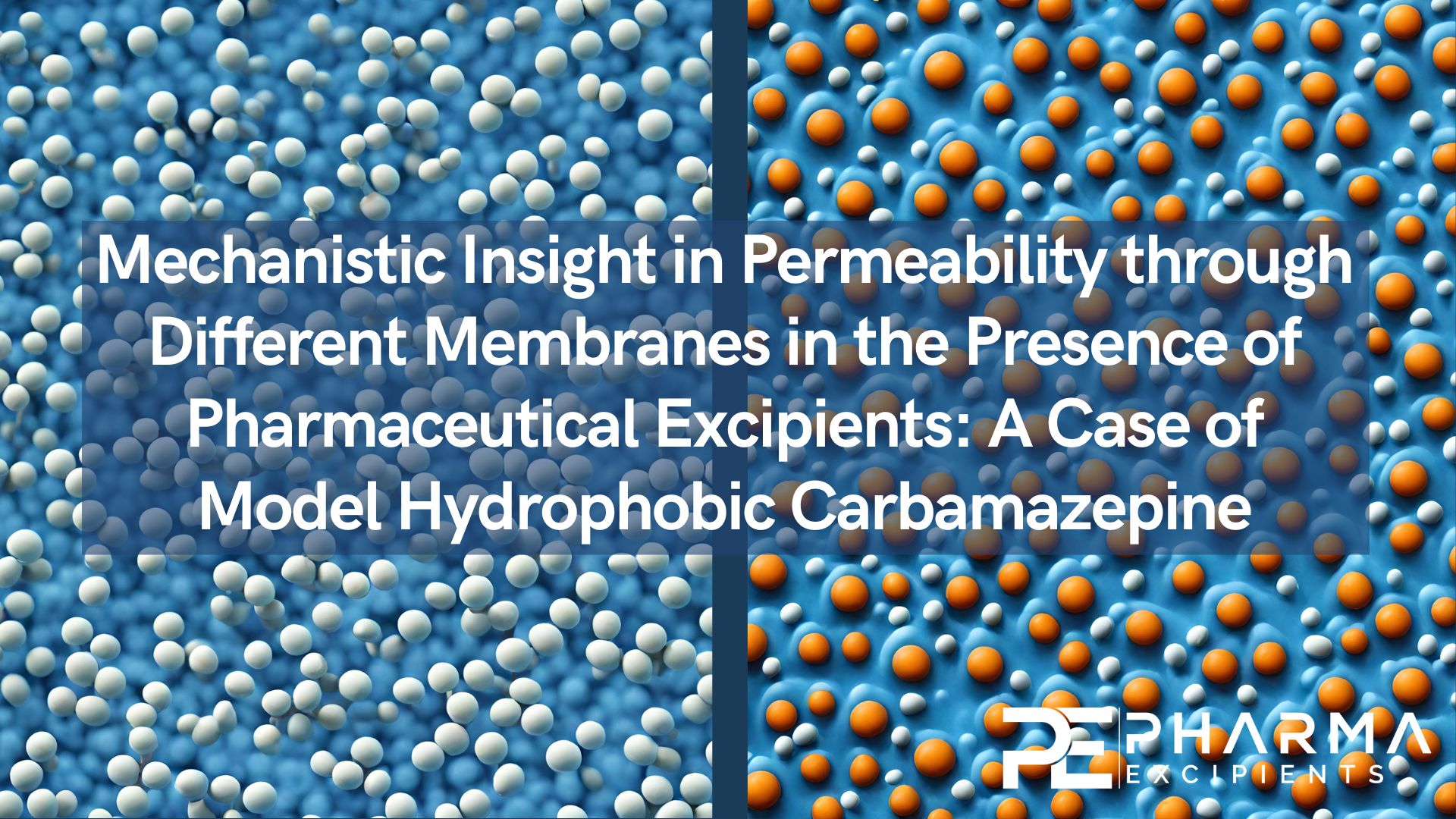Mechanistic Insight in Permeability through Different Membranes in the Presence of Pharmaceutical Excipients: A Case of Model Hydrophobic Carbamazepine

The present study reports the effects of two pharmaceutical excipients of differing natures—non-ionic surfactant pluronic F127 (F127) and anionic sulfobutylether-β-cyclodextrin (SBE-β-CD)—on the permeation of the model compound, carbamazepine (CBZ). The permeability coefficients of CBZ at three concentrations of the excipients were measured through two different artificial barriers: hydrophilic cellulose membrane (RC) and lipophilic polydimethylsiloxane–polycarbonate membrane (PDS). The equilibrium solubility of CBZ in F127 and SBE-β-CD solutions was determined. The micellization, complexation, and aggregation tendencies were investigated. Systemically increasing the solubility and the reduction of permeation upon the excipients’ concentration growth was revealed. The quantitative evaluation of the permeability tendencies was carried out using a Pratio parameter, a quasi-equilibrium mathematical mass transport model, and a correction of permeability coefficients for the free drug concentration (“true” permeability values). The results revealed the mutual influence of the excipient properties and the membrane nature on the permeability variations.
Download this research paper as a PDF: Mechanistic Insight in Permeability through Different Membranes in the Presence of Pharmaceutical Excipients
Materials
Volkova, T.; Simonova, O.; Perlovich, G. Mechanistic Insight in Permeability through Different Membranes in the Presence of Pharmaceutical Excipients: A Case of Model Hydrophobic Carbamazepine. Pharmaceutics 2024, 16, 184. https://doi.org/10.3390/pharmaceutics16020184

